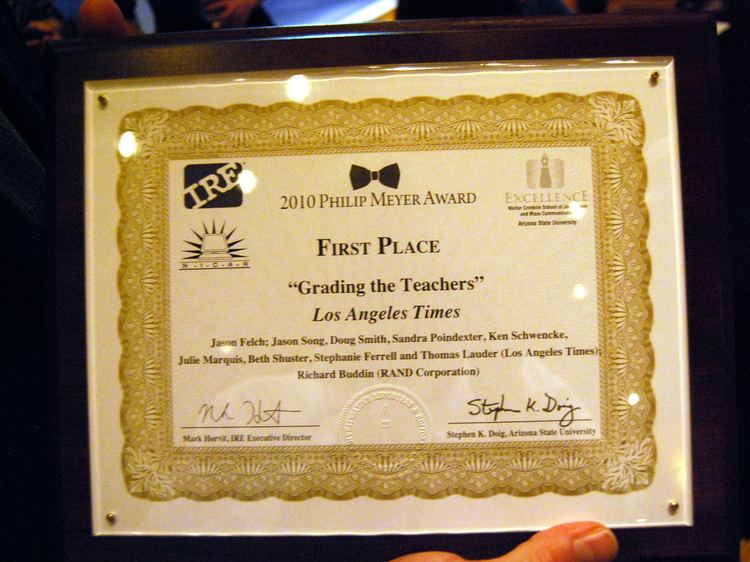First awarded 2005 | Reward(s) $500 | |
 | ||
Awarded for Best journalism done using social science research methods Presented by National Institute for Computer-Assisted Reporting and Arizona State University's Walter Cronkite School of Journalism and Mass Communication Official website ire.org/awards/philip-meyer-awards | ||
The Philip Meyer Journalism Award has been awarded since 2005 to recognize the best journalism done using social science research methods. It is a joint program of the National Institute for Computer-Assisted Reporting and Arizona State University's Walter Cronkite School of Journalism and Mass Communication. The award is named for Philip Meyer, a groundbreaking journalist and professor who has championed the use of scientific methods in the media. It is presented at the annual conference held by the National Institute for Computer-Assisted Reporting.
Thomas Hargrove, Fred Schulte and David Donald are the only reporters to have won the award twice.
List of winners and their official citations
References
Philip Meyer Journalism Award Wikipedia(Text) CC BY-SA
